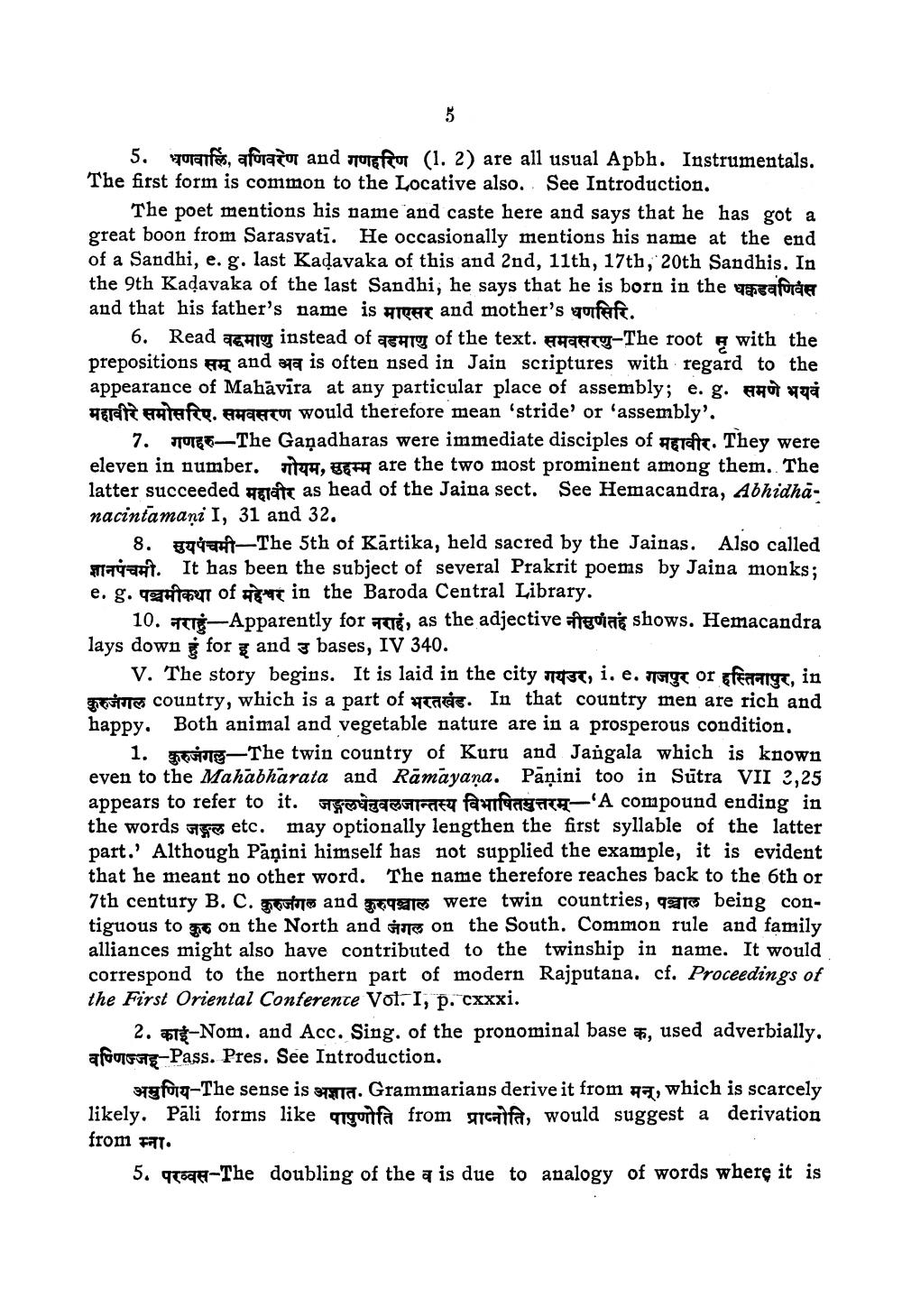________________
5. Yurants, aforator and surffor (1. 2) are all usual Apbh. Instrumentals. The first form is common to the Locative also. See Introduction.
The poet mentions his name and caste here and says that he has got a great boon from Sarasvati. He occasionally mentions his name at the end of a Sandhi, e. g. last Kadavaka of this and 2nd, 11th, 17th, 20th Sandhis. In the 9th Kadavaka of the last Sandhi, he says that he is born in the vacaforget and that his father's name is माएसर and mother's धणसिरि.
6. Read q&hly instead of acity of the text. AHafty-The root with the prepositions in and ma is often nsed in Jain scriptures with regard to the appearance of Mahāvīra at any particular place of assembly; e. g. FHOS erat hatefig. FHAFTU would therefore mean 'stride' or 'assembly'.
7. TOE-The Gañadharas were immediate disciples of Heteit. They were eleven in number. 94, UEFH are the two most prominent among them. The latter succeeded wat as head of the Jaina sect. See Hemacandra, Abhidhanacintamani I, 31 and 32.
8. Hyu -The 5th of Kārtika, held sacred by the Jainas. Also called t e . It has been the subject of several Prakrit poems by Jaina monks; e. g. पञ्चमीकथा of महेश्वर in the Baroda Central Library.
10. TE-Apparently for it, as the adjective afredag shows. Hemacandra lays down for z and 3 bases, IV 340.
v. The story begins. It is laid in the city गयउर,i. e. गजपुर or हस्तिनापुर, in Shouture country, which is a part of cats. In that country men are rich and happy. Both animal and vegetable nature are in a prosperous condition, 1.
The twin country of Kuru and Jangala which is known even to the Mahabharata and Rāmayaņa. Pāņini too in Sūtra VII 2,25 appears to refer to it. जलधेनुवलजान्तस्य विभाषितमुत्तरम्-'A compound ending in the words go etc. may optionally lengthen the first syllable of the latter part.' Although Panini himself has not supplied the example, it is evident that he meant no other word. The name therefore reaches back to the 6th or 7th century B. C. motora and wat were twin countries, 996 being contiguous to me on the North and it on the South. Common rule and family alliances might also have contributed to the twinship in name. It would correspond to the northern part of modern Rajputana. cf. Proceedings of the First Oriental Conferente Vol. I, p. cxxxi.
2. 278-Nom. and Acc. Sing, of the pronominal base, used adverbially, afootfets-Pass. Pres. See Introduction.
__ अमुणिय-The sense is अज्ञात.Grammarians derive it from मन्, which is scarcely likely. Pali forms like qugunfa from gtcalfa, would suggest a derivation from FT.
5. 9747-The doubling of the a is due to analogy of words where it is




